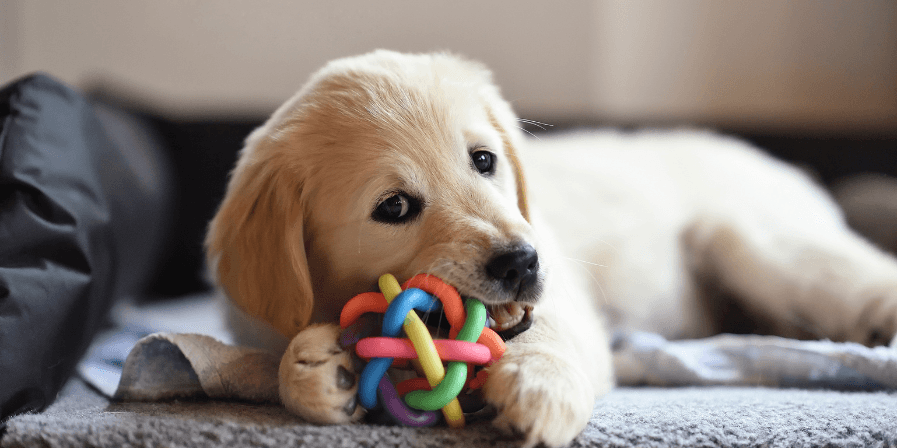10 Fun Indoor Activities to Keep Your Dog Fit & Happy

Keeping your dog fit and happy, especially when you’re stuck indoors, can be challenging. However, with a little creativity, you can ensure your dog stays active, mentally stimulated, and physically healthy, all from the comfort of your home.
Here are 10 fun indoor activities that not only burn energy but also engage your dog’s mind, improving both their physical fitness and happiness.
Why Is Exercise Important for a Dog?
Exercise is crucial for a dog’s overall health and well-being. Regular physical activity helps to prevent obesity, keeps muscles strong, and promotes a healthy heart. Mental stimulation, in turn, alleviates behavioral issues such as anxiety and destructive chewing. Dogs with ample exercise tend to be more balanced, calm, and well-behaved. If you live in an apartment or are facing harsh weather, keeping your dog physically and mentally engaged indoors can help prevent the frustrations of a sedentary lifestyle.
10 Ways Dogs Can Get Exercise Indoors
Though most of these indoor exercises are safe for all dogs, it’s always wise to check with your veterinarian before making significant changes to your dog’s exercise routine. Every dog is different, and your vet can provide guidance tailored to your dog’s specific needs.
1. Tug of War
Tug of War can be an exciting indoor game for your dog, helping them burn energy while being confined to small spaces. However, it’s important to set boundaries to ensure the game remains safe. Train your dog to release the toy when commanded to avoid reinforcing possessiveness. For the best experience, use sturdy tug toys that are gentle on your dog’s teeth, like rope toys or durable rubber options. Avoid using clothing or hands as toys to prevent bad habits. Keep sessions short to protect your dog’s dental health, and always supervise to ensure they don't swallow any toy parts.
2. Interactive Puzzle Toys
Puzzle toys are an excellent way to keep your dog mentally engaged while also promoting problem-solving. These toys often have compartments where you can hide treats, encouraging your dog to figure out how to open or move pieces to get the reward. Start with an easier puzzle and gradually increase the difficulty to keep your dog challenged. Interactive puzzle toys can improve your dog’s cognitive skills and slow down the eating process for fast eaters. They also provide great mental stimulation on rainy days when outdoor play isn't an option. Make sure to supervise your dog during puzzle time to ensure they don’t get frustrated. Over time, puzzle games can help strengthen your dog's patience and focus.
3. Hide and Seek
Hide and seek is a great mental exercise that taps into your dog's natural hunting instincts. You can start by hiding treats or toys in different areas of your home and letting your dog sniff them out. As your dog becomes more proficient at the game, increase the difficulty level by hiding items in harder-to-reach spots, such as behind furniture or under blankets. This game is great for working on your dog’s scent-tracking skills, improving focus, and reinforcing their ability to solve problems. Be sure to reward your dog with praise or extra treats when they find the hidden items to keep the game fun and motivating.
4. Indoor Fetch
If you have enough space inside, fetch can be an excellent way to burn off your dog’s excess energy. It works well in hallways or large living rooms where your dog can run back and forth. Use a soft toy or ball to avoid damaging furniture or walls. The game promotes cardiovascular health, strengthens muscles, and helps with coordination. It’s a fantastic exercise for high-energy breeds who love to chase and retrieve. Just be mindful of the space and make sure your dog isn’t running too fast in a confined area, as it can lead to injury if not supervised.
5. Training Sessions
Training your dog indoors provides an excellent opportunity for both mental and physical stimulation. Use this time to reinforce basic commands like “sit,” “stay,” and “heel.” You can also teach fun tricks such as “roll over,” “spin,” or “high five.” Training builds a strong bond between you and your dog, and it challenges their cognitive abilities. Additionally, this activity promotes obedience and helps curb unwanted behaviors. Always use positive reinforcement, such as treats or praise, and keep the training sessions short and engaging to avoid overstressing your dog.
6. Obstacle Course
Create a DIY obstacle course using furniture, pillows, or other household items. Encourage your dog to jump over pillows, crawl under tables, and weave through chairs. This activity provides a full-body workout, helps with agility, and promotes coordination. It also engages your dog’s mind as they figure out how to navigate the course. Remember to keep the course safe and avoid obstacles that may be too challenging or could cause harm. Adjust the course according to your dog’s size, age, and skill level to keep it fun and safe.
7. Interactive Play with Flirt Poles
A flirt pole is an exciting toy that simulates the movement of prey. It consists of a long pole with a toy or lure attached to a string. This game encourages your dog to chase, jump, and sprint after the moving toy. Flirt pole play is perfect for high-energy dogs, and it provides a cardiovascular workout, improves agility, and boosts your dog’s prey drive. Just make sure to let your dog catch the toy occasionally to avoid frustration. Supervise your dog during flirt pole play to prevent overstimulation, and be cautious not to jerk the toy too hard, as it may lead to injury.
8. Scent Games
Dogs have an incredibly sharp sense of smell, and scent games are a fantastic way to engage their olfactory skills. You can hide treats or favorite toys in various places around your home and let your dog search for them. This game helps your dog focus, improves their tracking skills, and gives them mental stimulation. You can even add a challenge by hiding the treats in more difficult locations. Always reward your dog with treats or praise when they find the hidden item to reinforce the behavior and make the game more enjoyable.
9. Stair Climbing
If you have stairs, stair climbing is an excellent way for your dog to get a full-body workout indoors. Going up and down stairs strengthens the leg muscles and promotes cardiovascular health. Start with a few repetitions, especially if your dog is older or has joint issues. Monitor your dog to ensure they don’t overexert themselves. For smaller breeds or those with mobility issues, stair climbing might not be suitable, but for larger, high-energy dogs, it can be a great way to burn off energy indoors.
10. Interactive Play with Laser Pointers
Laser pointers can be a fun and interactive way to keep your dog engaged. By moving the laser across the floor or walls, you can encourage your dog to chase the light. However, be careful not to overdo it, as some dogs may become frustrated if they can’t “catch” the light. To avoid this, you can occasionally stop the game and reward your dog with a treat or toy to give them a sense of achievement. This game can provide quick bursts of energy expenditure and can be especially fun for energetic dogs that love to chase.
At DCC Animal Hospital, we understand the importance of keeping your pet engaged and healthy. If you ever need professional advice or support with your dog’s fitness routine or overall care, our expert team is here to assist!
FAQs
1. How much indoor exercise does my dog need each day?
The amount of exercise your dog needs depends on their breed, age, and health. Generally, most dogs require 30 minutes to 2 hours of physical activity daily, which can be split into different sessions. Indoor activities like tug of war, fetch, or puzzle games can be great for keeping your dog active when you're indoors.
2. Can indoor activities replace outdoor walks for my dog?
While indoor activities can help keep your dog engaged and physically active, they might not replace the full benefits of outdoor walks. Walks provide mental stimulation, fresh air, and a chance to socialize, which are essential for your dog’s overall well-being. However, indoor games can be a great supplement, especially on days when outdoor walks aren't possible.


 How can we help?
How can we help?